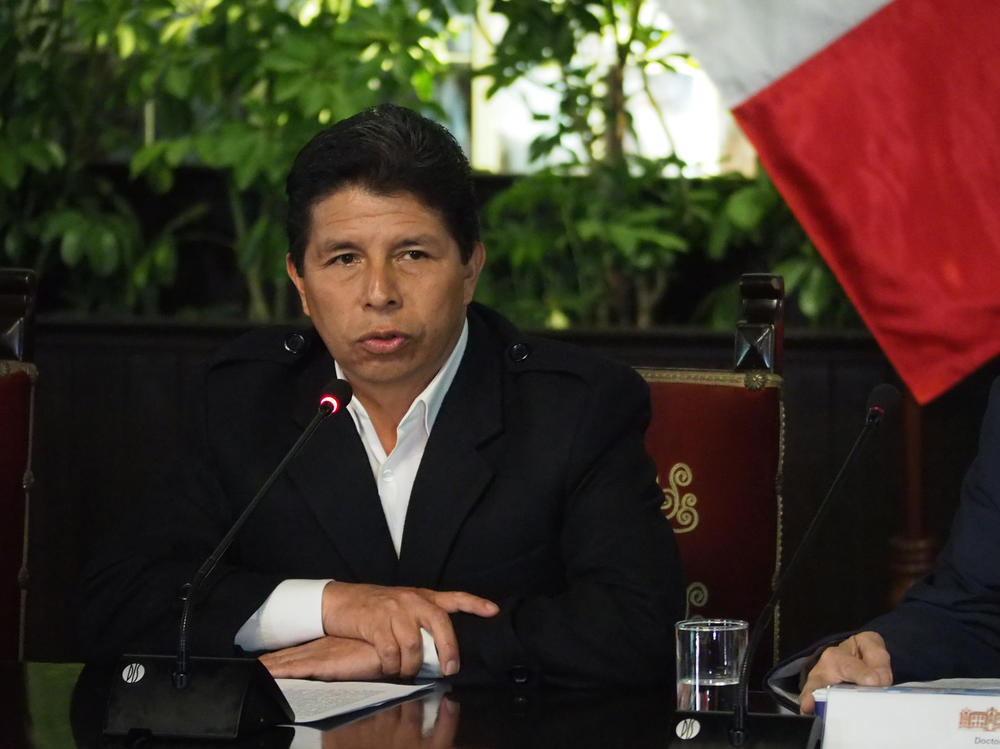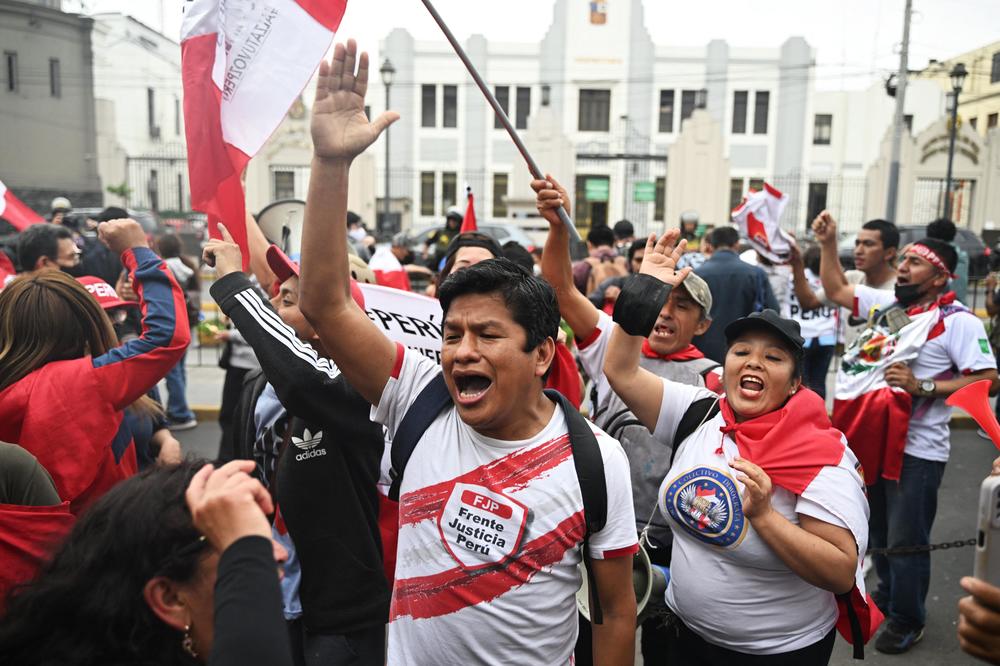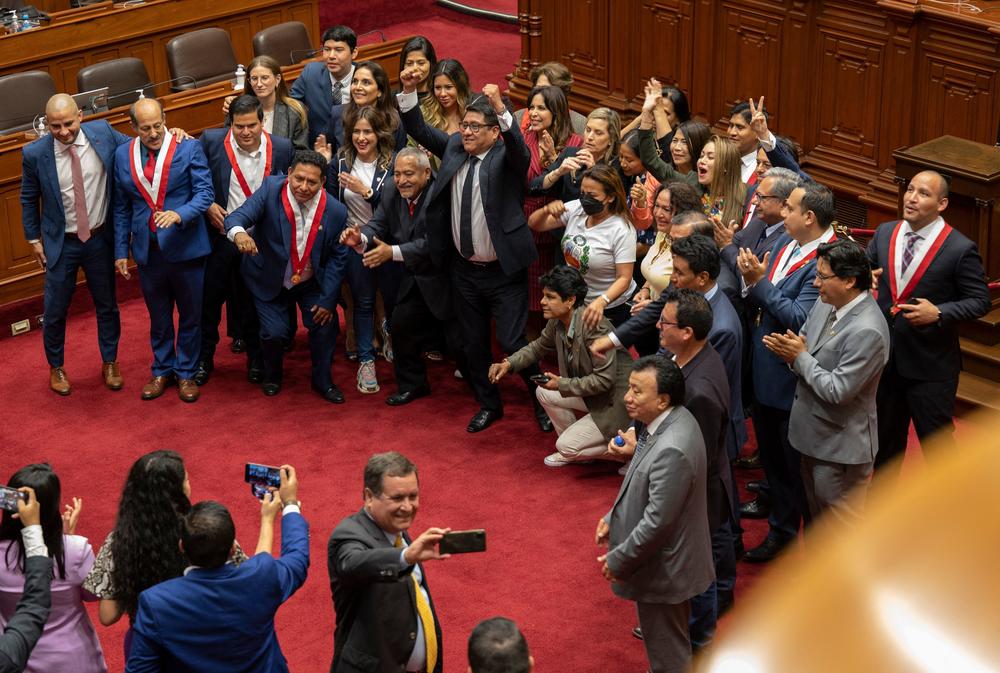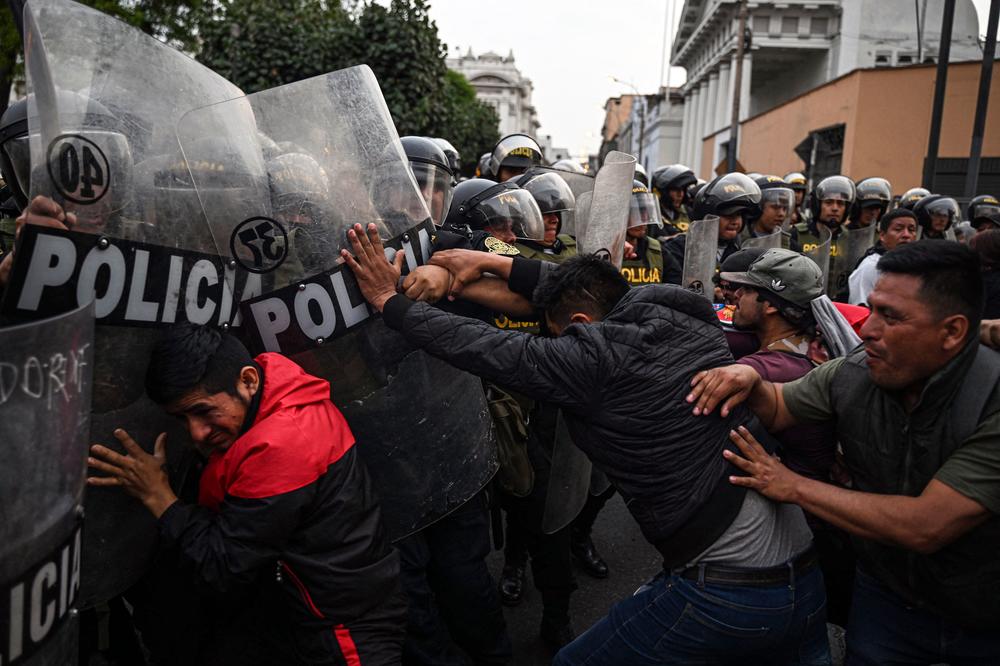Section Branding
Header Content
From president to prisoner: The rapid descent of Peru's Pedro Castillo
Primary Content
LIMA, Peru — Perhaps the most telling detail of Pedro Castillo's botched coup attempt this week was the fact that the high-stakes gamble may have been completely unnecessary.
The now former president of Peru made his power grab during an abrupt televised address to the nation on Wednesday morning in which he announced that he was shuttering Congress, "reorganizing" the judiciary and would rule by decree.
He had no constitutional authority to do so and, as swiftly became clear, zero support from the armed forces.
The chaos of Castillo
The move was intended to preempt an impeachment debate on corruption charges scheduled for that afternoon. Had that debate gone ahead as scheduled, many here still doubt that Castillo, 53, a former rural schoolteacher and wildcat strike leader, would have actually been ousted.
Since he took office in July 2021, Castillo's administration has been a chaotic mess of far left infighting, endless corruption scandals and ineptitude.
All the while, the president largely ignored the poor who he frequently claimed to represent.
The result is that lawmakers had already twice tried to impeach him but on each occasion failed to reach the required two-thirds supermajority. Based on the frantic vote counting on Wednesday morning, that scenario appeared likely to repeat itself.
From traffic gridlock - to prison
But Castillo's address to the nation, his hands visibly trembling as he clutched the sheet of paper on which his speech was written, changed the calculus.
The power grab was so flagrant that many members of Congress who had previously backed the erratic political novice, felt they had no choice but to vote to remove him. The impeachment debate was moved forward on an emergency basis and Castillo was ousted by 101 votes to six just under two hours after he had made his dramatic TV appearance.
That then followed a brief period of uncertainty over the now ex-president's whereabouts, until it emerged that his SUV had become stuck in Lima's frequently gridlocked traffic on its way to the Mexican Embassy, where Castillo had been planning to request asylum.
He appeared in court for the first time on Thursday, looking glum after spending his first night in the cells. The judges rejected his attorney's habeas corpus request and ordered the ex-president be kept in preliminary detention for another week.
Peru's new President
Castillo's Vice President, Dina Boluarte, was swiftly sworn in to take his place. She also hails from his self-declared Marxist-Leninist Free Peru party but has managed to steer clear of his endless corruption scandals while also distancing herself from the beleaguered leader in recent months.
Also a political neophyte, it remains unclear whether the 60-year-old lawyer has the political skills to build a legislative alliance within the conservative-dominated Congress and bring the Andean nation's six years of political turmoil to an end.
But Boluarte appears better qualified than Castillo — who faces half a dozen different corruption investigations, including one for allegedly falsifying his master's thesis — and should at least get a honeymoon period of several months.
Democracy tested - and survived
The other piece of good news for Peru is that despite being tested almost to its limits, the country's democratic institutions have survived this latest assault.
There have been only small protests and violence in the streets and most citizens appear to understand that, although lawmakers' motives in seeking to oust Castillo may have been, in part, self-serving, ultimately the president simply had to go.
Maybe, just maybe, the new government and Congress will finally find some common ground in addressing ordinary Peruvians' numerous serious challenges, from endemic food insecurity to the social fallout from the pandemic in a society which has had the highest Covid 19 mortality in the world.
Copyright 2022 NPR. To see more, visit https://www.npr.org.




